Winter Traverse of the Adirondack Great Range
Testing the limits of moving quickly over the rugged Adirondack wilderness in the Winter. I learned a lot about myself and the mountains in the process.
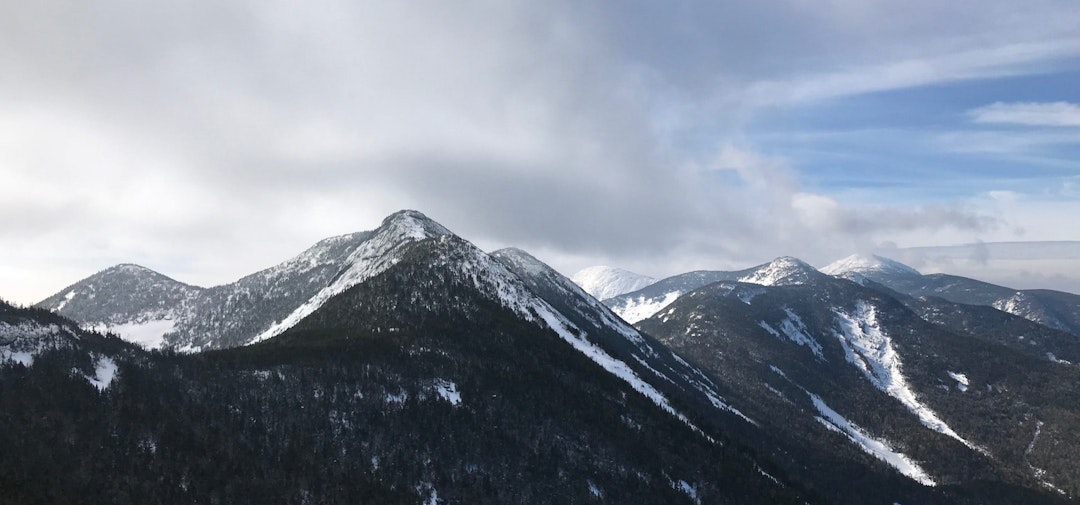
The Adirondack Great Range is a relatively small spine of 8 mountains in the Adirondack High Peaks wilderness. All 8 are on the famed 46er list and sit in a part of the Adirondacks that are rugged, inaccessible, and just plain gnarly. A complete traverse of the Great Range is a coveted objective, but almost unheard of in the dead of winter. The weather is ferocious, the terrain is technical, and the Adirondack high peaks will give you a kick in the face faster than any other wilderness I've hiked in. This “little” range packs a punch.
I hatched the idea of doing a complete winter traverse of the Great Range about a year ago. The idea was to push the limits of human movement in the mountains and see what I could learn. What better place for my experiment than in my home mountain range?
This was never going to be a winter record, which already stands. Instead I decided on a style for the traverse which I could use as a learning tool for more adventures here, as well as other mountains ranges in different parts of the world. The weather had to be cold, and preferably “bad”. The trails had to offer technical climbing conditions on ice and snow. This meant my “style” would require that I have technical winter climbing gear, the experience to use it, and still be able to move quickly over extremely challenging terrain. I’d have to have the physical and mental endurance to keep it up for 16 hours or more.
I wanted to optimize for speed and efficiency in the conditions I mentioned above. So, I spent the last year experimenting and learning what was possible and what might work for me. After doing it, there is still a lot I could have done better.
My goal was to do it in less than 16 hours, and I was on schedule for most of it, until I had to break trail in deteriorating snow conditions to get up Mt Haystack. That broke my time, and my will. It was a struggle to finish Marcy after that. I finished in 17:44 which is good enough for me.
I’ll have a lot more to add later. A gear review, planning, nutrition, workouts, training, mental fortitude, etc. But for now, I just wanted to share the numbers and show off some pics.
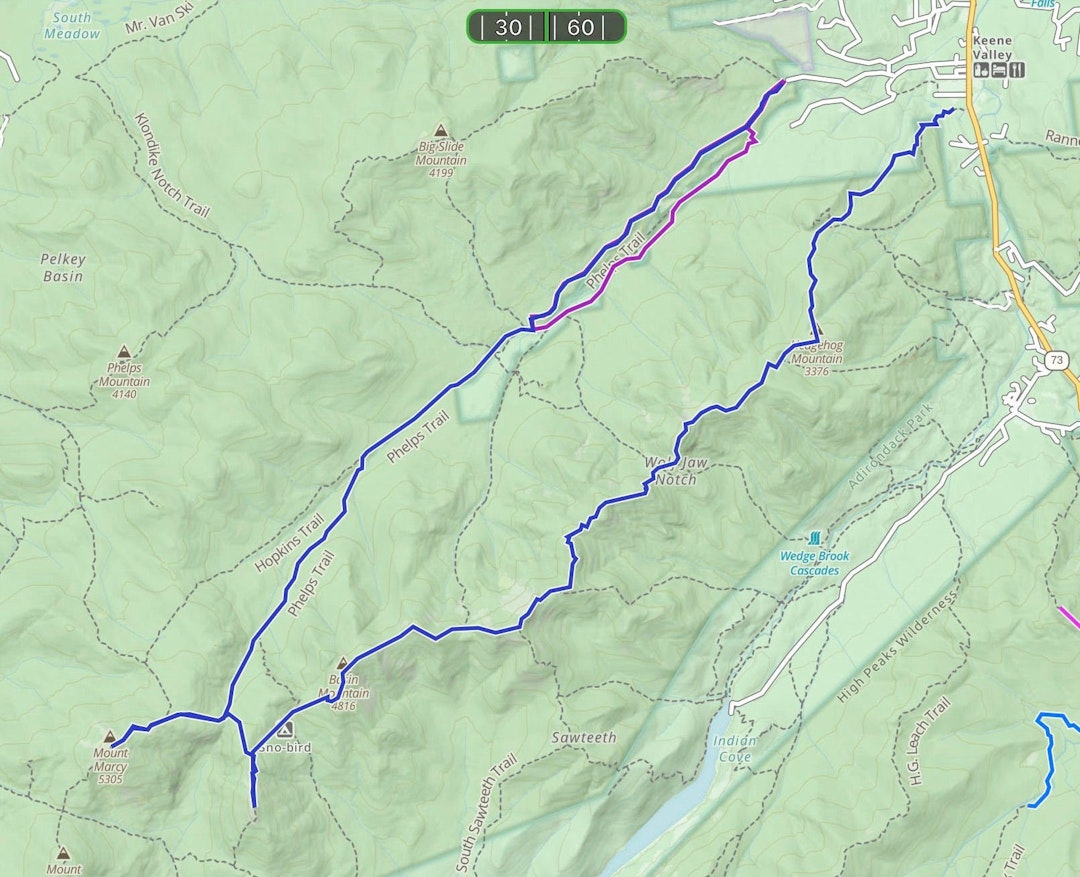

The trails near the summits were all steep and choked with snow and ice. Not to mention descending the cable route on Gothics and the rock ledges on Saddleback. (Gothics and Saddleback are not pictured.)
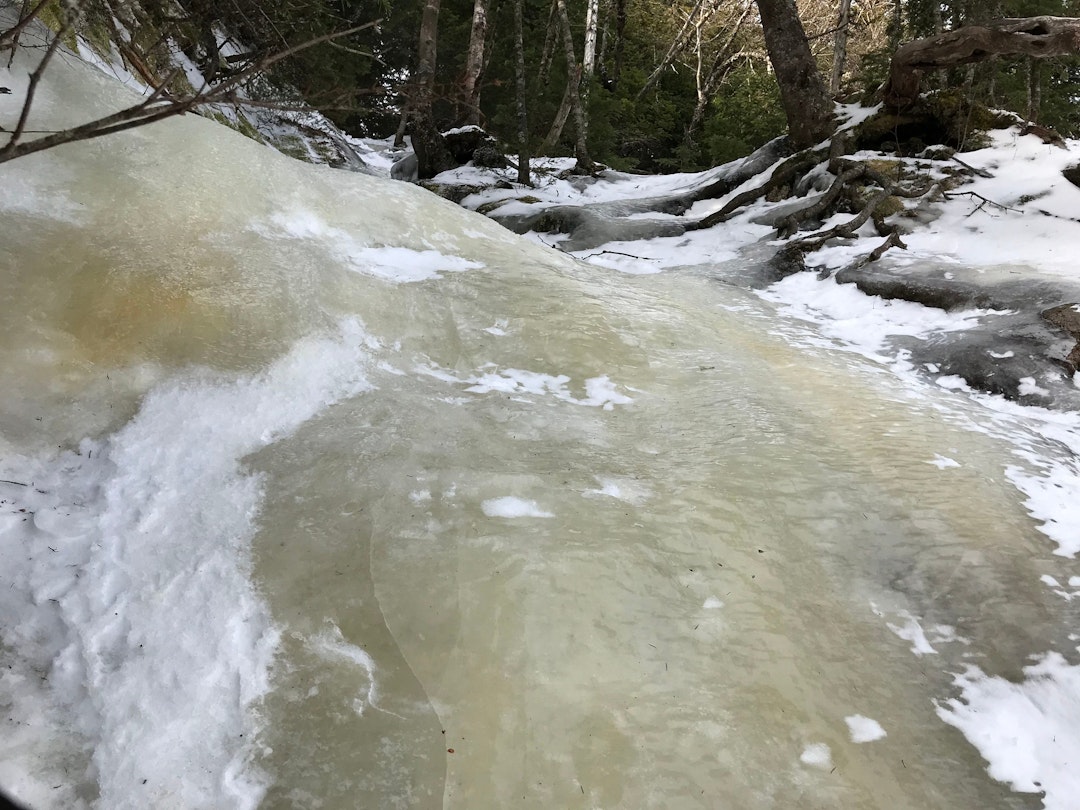
The technical crampons and ice climbing tools were definitely a required part of the kit for moving quickly and safely. The mountaineering boots were not the most comfortable thing to be wearing, but provided the security I needed. Plus, I wanted to see how far I could push them. I've had long days in mountaineering boots before, but I was skeptical about how they would feel hiking out 7 miles on the approach trail.

This is me on Armstrong. I was still close to my schedule at this point. Three peaks completed out of eight.

Climbing up the exposed ridge on Gothics is an awesome experience, especially in winter.
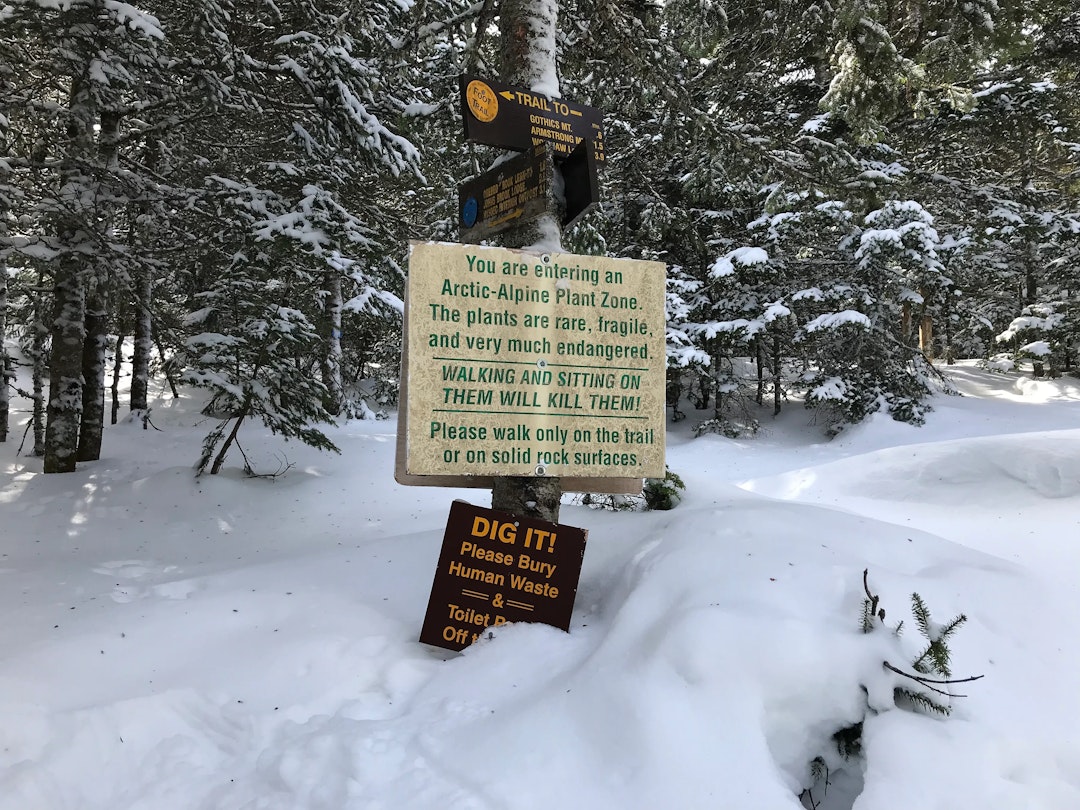
There is a lot of snow up in the southern half of the great range. A lot.
Not wanting to take the time to switch between snowshoes and crampons as I transitioned up and down the summits meant that I was spending significant energy postholing through the snow drifts in the cols between peaks.
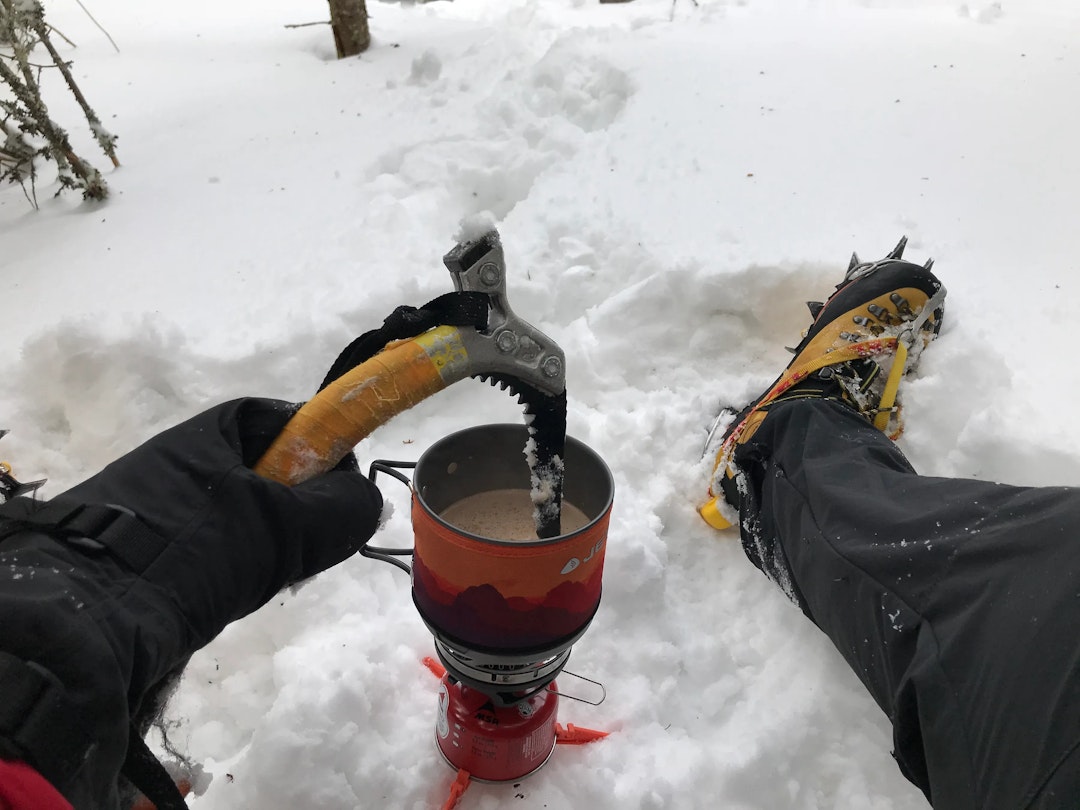
After making it to the col between Gothics and Saddleback. Brewing up some heavy cream, butter, and Carnation Instant Breakfast, mountaineer style. I got there 10 minutes ahead of schedule.

By the time I got to Basin the gusts were driving hard and I had to get the hell outta there. I was barely able to keep my balance for this selfie. There was another climbing pair that had just completed the slide, and we descended together. They were 1 of only 2 groups I saw all day, however I did see tracks up Haystack and Marcy.
You can tell when things start going wrong when a mountaineer stops taking photos. For me, I had a long slog out of the col to get to Haystack from Basin. The trail was not broken and my crampons were balling up in the warmer snow. On top of that, I kept dropping into waste deep postholes. I tried to switch to snowshoes but the traction was terrible in the deep and steep snow. I finally developed a method of plodding along 12 inches at a time that worked. I had run into the this problem in the same spot back in December, and there really is not much a person can do about it. Between the crampon and snowshoe changes, and the long slog up out of the col, I summited Haystack an hour late (17:30) and completely out of gas. Never mind the near complete whiteout. Marcy was going to be a challenge.
After descending Haystack, I started up Marcy. Totally gassed, I’d move for 2 or 3 minutes before collapsing in the snow to find the energy and motivation to get it done. Once on the summit cone I used my ice tools and crawled up the snow and ice. I convinced myself it was climbing, but when you are on tools and front points on a 35% slope … that’s crawling ;-) I sat on the dark summit at 19:30 with the driving rain to my back. Sitting under my puffy jacket with my hood up, I threw my tools down at my feet, pulled off a mitten with my teeth, and snapped this summit shot.

The 7 mile hike down the valley was epic. At first I felt on top of the world. Descending still seemed easy. Then about the time I hit the John’s Brook DEC outpost it all collapsed. My hip flexors gave out, my mountaineering boots were yelling at me, and I was bonking quickly. I’ve never been so happy to see the parking lot.